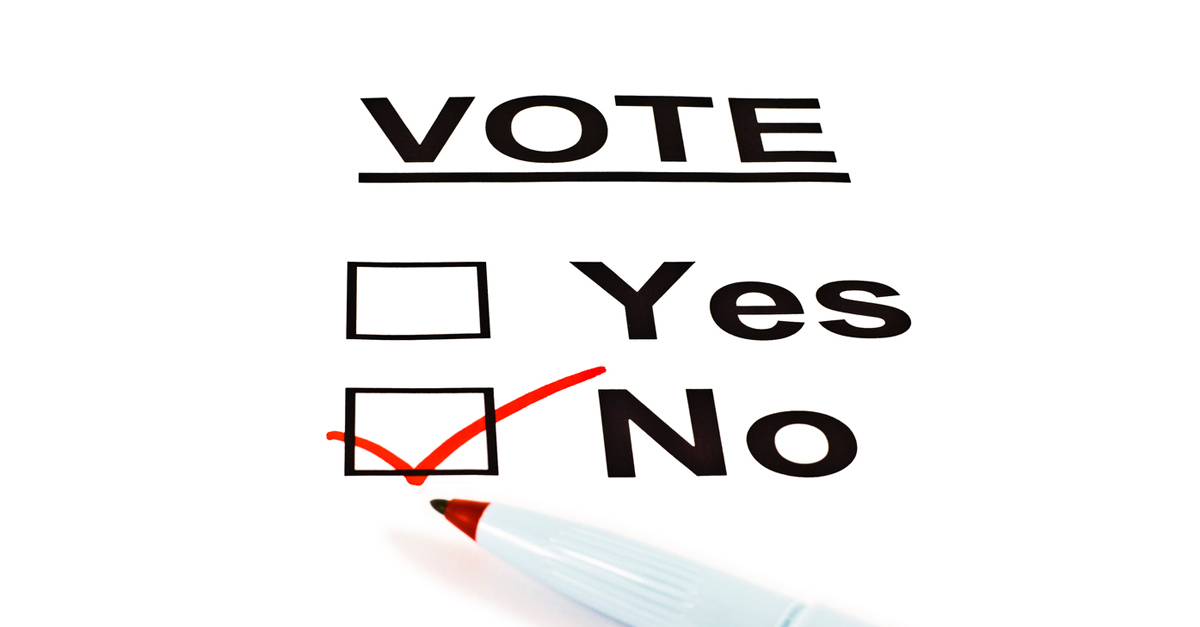
While most proposals are accepted, creditors can reject or request modifications to your initial offer. Understanding how and why rejections happen helps you make informed decisions about your debt solution options.
As a legally binding agreement filed through a Licensed Insolvency Trustee, a consumer proposal immediately stops wage garnishments and provides a stay of proceedings against collection actions on your unsecured debts. These benefits can only be maintained if your proposal is accepted.
Table of Contents
How Often Are Consumer Proposals Rejected?
At Hoyes Michalos, we have a 99% approval rate for consumer proposals. Approximately 90% of proposals are accepted by creditors as originally filed. A further 9% are accepted after negotiation with creditors to modify the terms of the proposal. Only 1% of consumer proposals are rejected.
This success rate is due to our knowledge of what unsecured creditors are looking for and years of working with individuals to find a repayment solution that fits their specific financial situation and budget.
Understanding the Consumer Proposal Voting Process
Your consumer proposal must be accepted by your creditors before it becomes legally binding. The voting process is established by the Bankruptcy and Insolvency Act.
After filing a consumer proposal, creditors have 45 days to submit their votes. During this period, they may:
-
Accept your proposal as filed
-
Reject your proposal outright (vote no);
-
Ask for a creditors meeting or
-
Submit a request for modification or do nothing
Your proposal is automatically accepted if no creditors’ meeting is requested. This is the most common situation, and formal meetings are rare. A meeting is only legally required if more than 25% of the dollar value of claims submitted requests a creditor’s meeting.
If a meeting of creditors is required, it must be held within 21 days of the request. During this meeting, creditors can request additional information or negotiate terms. After the meeting, final votes are counted.
Votes are counted based on the dollar value of each creditor’s claim, not the number of creditors voting. For your proposal to be accepted, creditors holding more than 50% of the proven claims must vote in favour. For example, if you owe $50,000 in total debts, and a creditor owed $30,000 votes yes while two creditors owed $10,000 each vote no, your proposal would still be accepted because creditors holding 60% of the dollar value approved it.
Get help with your consumer proposal
Common Reasons for Proposal Rejection
While most consumer proposals are accepted, understanding common reasons for rejection or renegotiation helps avoid potential pitfalls. Most rejections occur because the proposal terms don’t align with creditor expectations.
Here are the main reasons creditors may reject a consumer proposal:
-
Payment offer is too low relative to bankruptcy – Creditors expect to receive more than they would if you were to file bankruptcy. In a proposal, you are extending your payments over a longer period. That is why creditors expect your offer to be higher than in a bankruptcy.
-
Your offer is too low relative to your income – Creditors will review your income and expense statement as part of their approval process. If they think you can afford to make higher monthly payments, they may request a higher proposal offer.
-
Your offer does not meet minimum recovery rates – While there’s no fixed minimum, major creditors have internal guidelines for acceptable recovery rates. Typically, this is around 20 cents on the dollar.
-
Asset values not properly reflected – If you own significant assets, creditors expect your proposal to reflect their value in the payment terms.
-
Incomplete or unclear information – Missing documentation about income, expenses, or assets can lead to rejection until proper clarification is provided.
-
Questions about income stability – Your income must be reliable enough to maintain proposal payments. Recent job changes, irregular income, or unstable employment can trigger concerns about your ability to complete the proposal.
While this aspect of consumer proposals can be challenging, it underscores the importance of working closely with your trustee to craft a proposal that’s likely to be acceptable to your creditors from the outset. By addressing potential objections proactively, you can minimize the risk of rejection and increase your chances of successfully resolving your debt through a consumer proposal.
Can One Creditor Kill a Proposal?
No. Consumer proposals are accepted or rejected based on votes by all your creditors. Each creditor gets a vote for every dollar you owe them, and voting in a consumer proposal operates under a majority rules process. This means that if more than half of your debts are voted in favour of your proposal, the creditor who voted “no” must participate in the consumer proposal.
The only time a single creditor has sway over whether your proposal succeeds is if they are your majority creditor, meaning they are owed more than 50% of the claims filed in the voting process.
What Happens If A Consumer Proposal is Rejected?
If a vote is held, and the majority of creditors vote “no,” this does not mean the end of the process.
Your first step should be contacting your LIT immediately to review the reasons for rejection, understand creditor concerns, and discuss possible modifications.
If your creditors reject your proposal, you have options. You can:
-
Accept any counter-offer made by your creditors
-
Renegotiate the terms of your proposal, including increasing your monthly payment amount or changing the length of the proposal (to a maximum of 5 years).
-
Withdraw your proposal and file for bankruptcy
-
Withdraw your proposal and pursue a different debt relief option, such as a debt management plan or repaying debts on your own
-
Withdraw your proposal and file again at a future date.
You can file again at any time, however, if you file another proposal within six months the automatic stay provisions of the Bankruptcy & Insolvency Act do not apply. It’s best to wait a minimum of six months, so you have full protection from creditor actions again.
Will I Be Deemed Bankrupt If My Proposal Is Rejected?
No. A rejected consumer proposal doesn’t automatically lead to bankruptcy. If your proposal is rejected, you have several options: you can modify the terms and resubmit your proposal, explore other debt management solutions, or choose to file for personal bankruptcy.
Does a Rejected Consumer Proposal Appear on My Credit Report?
Yes. The Office of the Superintendent of Bankruptcy reports consumer proposals to the credit bureau when filed. Even if rejected, it will remain on your credit report for six years from the date of filing.
This is why discussing your offer with a Licensed Insolvency Trustee before filing is important to ensure it meets creditor expectations. Again, only 1% of proposals are rejected, so this is not something to be overly concerned about.
Tips for Consumer Proposal Success
For thousands of Canadians struggling with unsecured debts, a consumer proposal offers a structured payment plan to regain financial stability.
A successful consumer proposal strikes a balance between what you can realistically afford and what creditors consider acceptable. By working with your Licensed Insolvency Trustee to craft a reasonable initial offer, you increase your chances of quick acceptance and avoid the stress and delays of negotiations. Remember that while creditors want to maximize their recovery, they also recognize that an acceptable proposal provides better returns than alternatives like bankruptcy.
Working with an experienced Licensed Insolvency Trustee significantly improves your chances of filing a successful consumer proposal. While rejections can happen, most proposals succeed with proper preparation and guidance. If you’re considering a consumer proposal, contact Hoyes Michalos for a free consultation to discuss your options and develop a plan that works for both you and your creditors.





